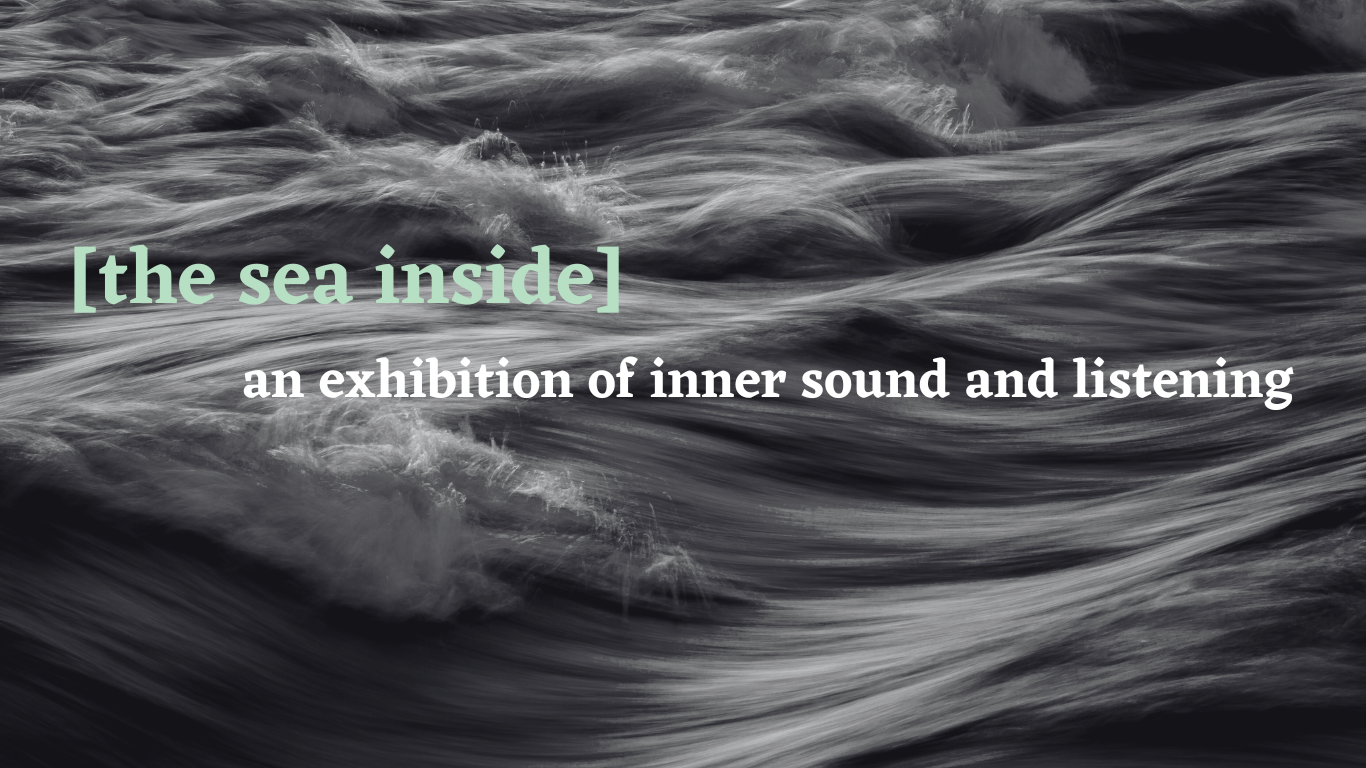Mapping experiences of inner sounds
My practice-based PhD from CRiSAP, University of the Arts, London, titled "Mapping experiences of inner sounds" investigates sounds in thoughts, asking if we hear sounds in our minds, what they mean to us and where they come from. My sound art and performance practice form an integral part of the research process, driving the research forward, often functioning as a way for me to work through and make sense of complex intersecting ideas and concepts. Through my research, I defined inner sounds as 'sounds we hear in both our conscious and unconscious mind, similar to, but different from an inner voice.'
My research investigates strategies of articulating and making inner sounds audible, and exploring the possibility, or impossibility, of developing a language to externalise and map experiences of inner sounds. The research also asks what a greater understanding of inner sounds means for our wider, cultural perception of listening, sound and sonic art.
My thesis 'Mapping Experiences of Inner Sound' and it's companion text 'Hearing Things', which presents the practice element of my research project, are both accessible online - just follow the links below!
Mapping Experiences of inner sound - thesis
Mapping Experiences of Inner Sound - UAL Repository
Mapping Experiences of Inner Sound - Academia.com
Abstract
This practice-based research expands the sound art discourse by identifying, defining, and
analysing what I have termed ‘inner sounds’— sounds we hear in both our conscious and
unconscious minds, similar to but different from an inner voice. Rarely, if ever, is the way we
experience sounds in our minds discussed in contemporary sound art discourse. This thesis
defines ‘inner sounds’ and contributes to the field of sound art discourse by arguing that a
deeper understanding of our relationship to inner sounds informs our wider understanding of
sound, specifically our understanding of sound as a cultural phenomenon.
Identifying the lack of an adequate vocabulary in the English language with which to discuss
sound and inner sound experiences, the thesis develops a taxonomy of inner sounds, which
allows for a more nuanced and detailed analysis of inner sound experiences.
In addition to outlining a taxonomy for inner sound, the thesis analyses several art and
performance works, including my own, further developing several theoretical considerations
for inner sound and listening experiences. Chapter 4, ‘The danger of inner sound’, examines
our relationship to auditory hallucinations, discussing why inner sounds are often perceived
as dangerous. Chapter 5, ‘Collective inner listening’, asks whether collective inner listening
is possible, and how that develops our understanding of inner sound experiences and sound
art theory. Chapter 6, ‘Threshold listening’, draws on affect theory to argue that the
properties of inner sound discussed in previous chapters situates inner listening and inner
sound at the threshold, and evaluates how this changes our understanding and discourse of
sound art.
Hearing Things - Practice
A sister publication to the thesis. While there are overlaps and both compliment each other, they can also be read independently.
Introduction:
In 2014 I officially started my research project, investigating ‘inner sounds’ – sounds we hear in both our conscious and unconscious minds, similar to but different from an inner voice. My interest in the idea of inner sounds had started a couple of years earlier, with the piece Scores for Silence’ (2011). In this piece, I asked the audience to use a number of everyday found objects to trigger or suggest an imaginary, ’inner’ sound. After exhibiting Scores for Silence, I could not stop thinking about inner sounds – what where they? Did everyone experience them? That became the start of this research project.
This book contains a record of the pieces I have created as part of my research into inner sound. The practice has been an important part of the research process. Of- ten, ideas and the0ries that are only starting to take shape, surface and gets ‘worked out’ within both the ‘doing’ and the subsequent analysis of the practice. The theory, on the other hand, has been an important inspiration and influence on developing the practice. While all the pieces can be presented on their own, apart from the research, taken together they form an important documentation of the development of my research project.
PHD WEBINAR – "MAPPING EXPERIENCES OF INNER SOUNDS"
the sea inside
'The Sea Inside' was an exhibition of the work created as part of my research project. it explored ideas of inner sound and listening through a wide range of works: scores, texts, objects and performance pieces.
Conference Papers and Talks
TVCE Symposium - Queer Acts of Hope, Guildhall School of Music and Drama, July 2025 - Un/folding – dangerous listening, affect and queer utopias - fragmented paper
London Conference in Critical Thought 2025 Birkbeck University, June 2025 Un/folding – dangerous listening, affect and queer utopias
Radical Listening – listening, creative practice and research - ResearchWorks; Guildhall School of Music and Drama, May 2025
Powers of Love: Enchantment to Disaffection Gothenburg University 2023 Queer Listening: On love, danger and affect
Tate Research Tate Galleries, 2022 Mapping experiences of inner sound' - research presentation
University of the Arts 2020 Mapping Experiences of Inner Sound: Webinar research presentation
Points of Listening University of the Arts 2017 Aural Séance - performance and discussion
Sound/Image University of Greenwich, 2017 thresholds
Sound Art Matters University of Aarhus, 2016 Porous Listening
Sound/Image University of Greenwich, 2015 The image as a trigger for inner sound

